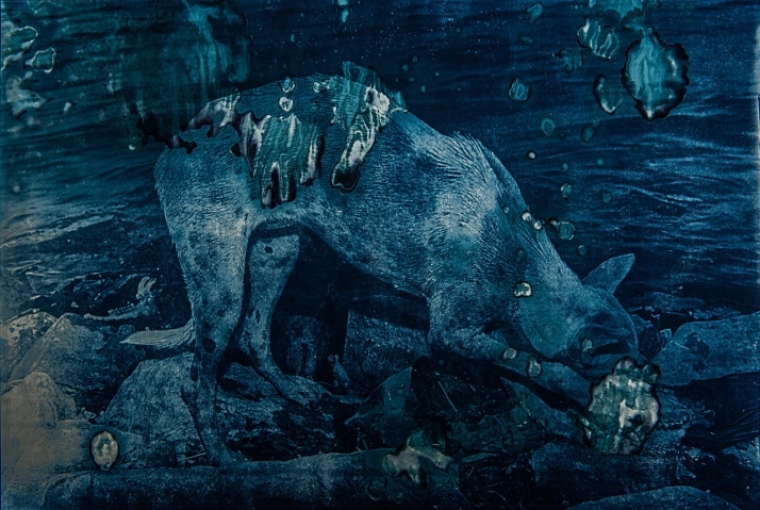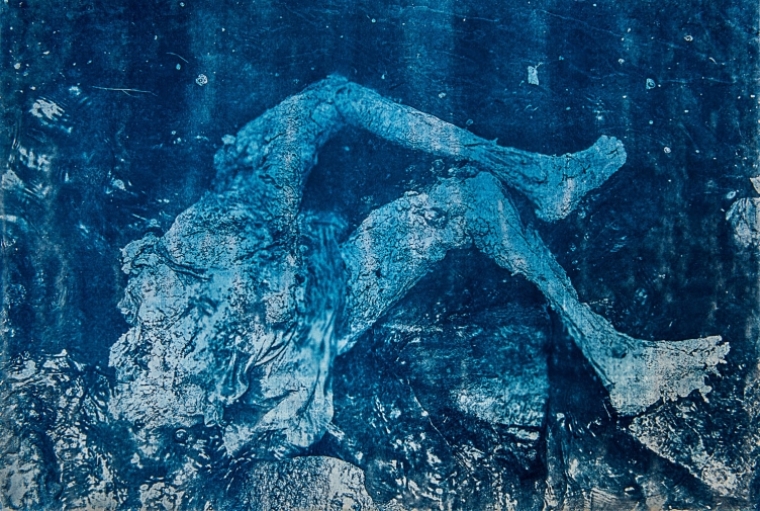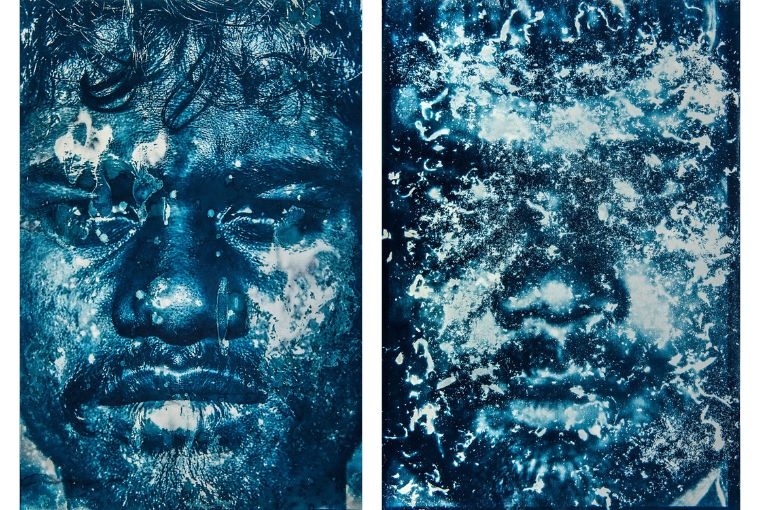

More than ever before, the river Ganga’s once ornate flow has been disrupted by continual and trivial human activities that pollute its ebb and fall. While it is still the most holy river in the country, the Ganga’s idiosyncrasy as one of the oldest, most pious channels of water is being veiled by the by-products of development and humankind. Lost River, curated by poet, and author Ranjit Hoskote, showcases Hari Katragadda’s work, commenting on similar themes. “Hari rejects the touristy, picturesque options of representing the Ganga. Instead, he throws us, the viewers, in at the deep end of all that has gone wrong with this most sacred yet most toxic and dangerously polluted of India’s rivers,” he says.
We converse with Ranjit Hoskote to understand the Lost River and the story behind Hari Katragadda’s mesmerizing work.
What is the inspiration and story behind your curation Lost River, displaying Hari Katragadda’s work?
I have been fascinated by Hari Katragadda’s practice for several years now after I first came upon his long-term photographic series, ‘Malana,’ which explores the middle ground between the documentary, ethnographic recording of the life of a community in the Himalayas and a compassionate, empathetic exploration of that community’s inner life and customs, the social and economic transitions that its members are living through. Hari also paints, draws, explores mixed-media possibilities, and has made the venerable cyanotype medium relevant today, as a means of bearing witness to ecological urgencies and political crises. I find myself drawn to Hari’s work both for his bold and experimental approach to formal and aesthetic questions and his willingness to confront major questions that should occupy our attention in a public sphere that is becoming increasingly devoid of serious existential discussion.

What is the significance of the appellation Lost River? How does it contribute to the essence of the exhibitt?
Lost River is the name I have given to this exhibition of five works or bodies of work by Hari Katragadda that I selected from the spread of his recent production during a studio visit with him late last year. These include two cyanotype series, ‘24 Foam Impressions’ and ‘You Can’t Step into the Same River Twice’, the textile installation, ‘Shroud’, a video installation titled ‘The Shimmer’, and the artist book version of ‘You Can’t Step into the Same River Twice.’ The life of the Ganga has inspired all these works, and a number of them have literally been produced in the Ganga’s water, which is the developing medium for the cyanotype plates in the show. In these images, we see the foam of industrial effluents, the detritus of sewage, the human remains and the sludge that is routinely emptied into the Ganga’s flow, whether in Varanasi or Kanpur. Hari brings us portraits of the most exploited and marginalised communities, who are linked to the Ganga by their hereditary or conscripted occupations – the Doms or corpse-burners of Varanasi, and the workers in the tanneries and glue factories of Kanpur.
Traditionally, it is the Saraswati, which is believed to have disappeared underground, which is regarded as the lost river. But I have chosen to name this show ‘Lost River’ to refer to the Ganga, a river that we have lost to the pollution we have generated and that we have besmirched with our caste apartheid and all its horrific, humiliating social and cultural asymmetries.
How does the pervasive use of the cyanotype technique across the exhibited works enhance the viewer's experience, both technically and aesthetically?
The cyanotype technique, which goes back to the earliest days of photography as a practice, brings us a restrained yet rich palette of cyan, turquoise, foam white and dove grey. Hari holds its potential for beauty in counterpoint with the shock and horror of the subjects he presents. Even as we appreciate the aesthetic quality of the technique and the cyanotype plate, we are reminded of our responsibility to the artist’s subjects, as viewers who are also citizens. These works remind us, eloquently, and forcefully, of our critical responsibility to fight injustice and defend the environment.

What do you think is the role of art in today’s time?
The role of art today, as in every historical period, is to resist the forces of oppression, silencing, conformity and complacency. Art, and artists, must continue to question the dogmas of the epoch and to give voice to the voiceless, while also experimenting with the formal means at hand and shaping new languages of expression.
Since you have worked with a multitude of art forms, which one do you think is the most fluid?
Over 36 years, I have contributed consistently to poetry, translation, the visual arts, architecture, and cultural theory. I believe that all these avenues of creative and critical articulation are fluid and responsive to their unfolding inner logic and external circumstances, each in its own distinctive way. The most generative situation is where I find my work in one art informing and nourishing my work in another art. This has often happened to me, as when a curatorial project I am working on in the visual arts is intuitively shaped by attention to beat, cadence and measure that comes from poetry. Or when my approach to drafting a poem takes its cue from the layout of architectural space. It’s not coincidental that the word ‘stanza’ means ‘room’ in Italian – our verses are our rooms, to be inhabited and infused with life breath.

What’s next for you?
I have just finished going through the proofs of a collection of my essays on the late painter and poet Gieve Patel, which will be published by Seagull as To Break and To Branch. I am working on a translation of the late 18th-century Urdu poet, Mir Taqi Mir, which Penguin will publish later this year. And I have to complete work, also for Penguin, on a non-fiction book that looks closely at the wonderfully, unpredictably hybrid and transcultural origins of so much that we regard as uniquely ‘Indian’, titled Lost and Found Histories.
Words Muskan Kaur
Date 25.01.2024